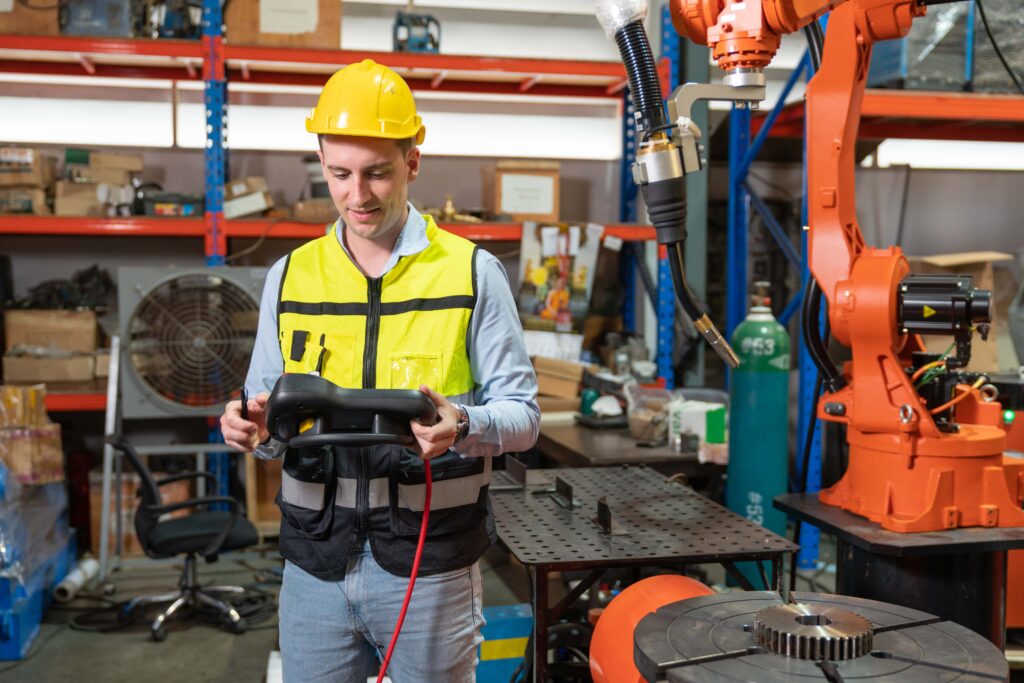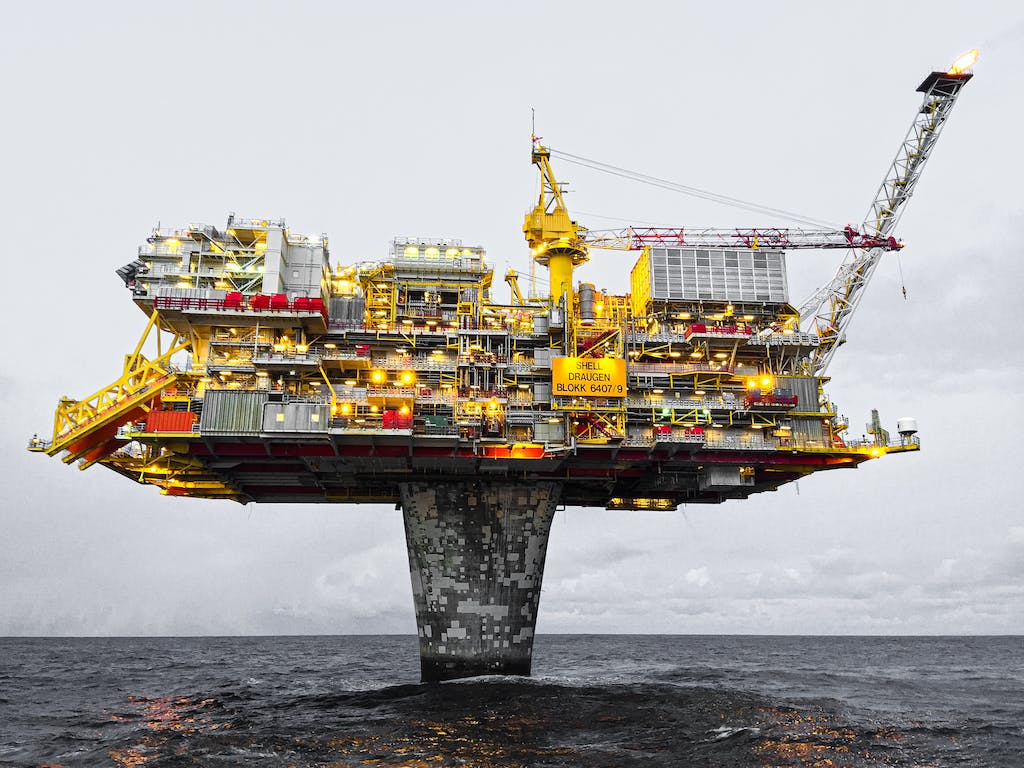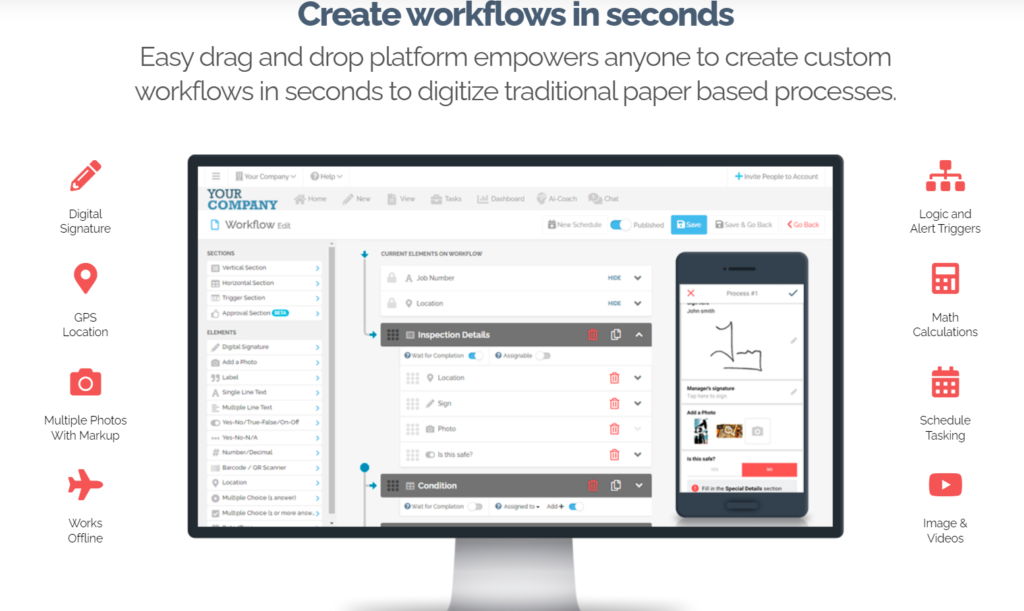Key Takeaways:
- Enhanced Precision: CAD technology offers unparalleled accuracy in designing and modeling complex structures in the oil and gas sector, reducing errors and improving safety.
- Improved Collaboration: CAD facilitates real-time collaboration among engineers, designers, and project managers, ensuring cohesive project execution.
- Cost and Time Efficiency: By streamlining the design process, CAD reduces development time and costs, making projects more economically viable.
Process Safety in Oil & Gas With CAD & Digital Workflows
In the ever-evolving landscape of the oil and gas industry, Computer-Aided Design (CAD) has emerged as a pivotal tool. CAD technology has revolutionized the way engineers and designers approach complex projects, offering unparalleled precision, efficiency, and innovation.
This article delves into the meaning and importance of CAD in the oil and gas sector, highlighting its transformative impact and the role of digital workflows like FAT FINGER in enhancing safety and operational efficiency.
Understanding CAD in Oil and Gas
Computer-Aided Design (CAD) refers to the use of computer systems to assist in the creation, modification, analysis, or optimization of a design. In the oil and gas industry, CAD is employed to design and model various components of oil rigs, pipelines, refineries, and other infrastructure. The technology enables engineers to visualize complex structures in 3D, simulate different scenarios, and make data-driven decisions.
The Evolution of CAD
CAD technology has come a long way since its inception. Initially, it was used primarily for drafting and creating 2D drawings. However, advancements in software and hardware have expanded its capabilities to include 3D modeling, simulation, and even virtual reality. Today, CAD is an integral part of the engineering workflow, enabling more accurate and efficient project execution.
The Importance of CAD in Oil and Gas

The oil and gas industry is characterized by its complexity and high stakes. Any error in design or execution can lead to catastrophic consequences, both financially and environmentally. CAD plays a crucial role in mitigating these risks by providing a robust platform for precise design and analysis.
Enhanced Precision and Accuracy
One of the primary benefits of CAD is its ability to produce highly accurate designs. Traditional drafting methods are prone to human error, which can lead to costly mistakes. CAD software, on the other hand, allows for precise measurements and detailed specifications, reducing the likelihood of errors.
Improved Collaboration
CAD software facilitates better collaboration among team members. Engineers, designers, and project managers can work on the same model simultaneously, making real-time updates and sharing insights. This collaborative approach ensures that everyone is on the same page, leading to more cohesive project execution.
Cost and Time Efficiency
By streamlining the design process, CAD significantly reduces the time and cost associated with project development. Engineers can quickly create and modify designs, run simulations, and identify potential issues before they become problems. This proactive approach saves both time and money, making projects more economically viable.
Case Studies: CAD in Action

To illustrate the transformative impact of CAD in the oil and gas industry, let’s look at a few real-world examples.
Case Study 1: Offshore Oil Rig Design
An engineering firm used CAD software to design an offshore oil rig. The 3D modeling capabilities allowed the team to visualize the entire structure, identify potential weak points, and make necessary adjustments. The result was a more robust and efficient design that met all safety and regulatory standards.
Case Study 2: Pipeline Construction
In another instance, a company used CAD to design a complex pipeline network. The software enabled the engineers to simulate different environmental conditions and assess the pipeline’s performance under various scenarios. This comprehensive analysis ensured that the pipeline was built to withstand extreme conditions, reducing the risk of leaks and failures.
CAD & Digital Workflows in Enhancing Safety

While CAD technology offers numerous benefits, integrating it with digital workflows can further enhance its effectiveness. FAT FINGER is a leading platform that provides powerful safety checklists and digital workflows tailored to the oil and gas industry. These workflows ensure that safety protocols are followed meticulously, reducing the risk of accidents and improving overall operational efficiency.
Take 5 Safety
The Take 5 Safety checklist on FAT FINGER encourages workers to take five minutes to assess potential hazards before starting a task. This proactive approach helps identify and mitigate risks, ensuring a safer work environment.
Near Miss Reporting
Near Miss Reporting is crucial for identifying potential hazards before they result in accidents. FAT FINGER’s digital workflow makes it easy for workers to report near misses, enabling timely interventions and preventing future incidents.
Job Hazard Analysis
Job Hazard Analysis (JHA) involves identifying and evaluating potential hazards associated with specific tasks. FAT FINGER’s JHA checklist ensures that all hazards are thoroughly assessed and appropriate control measures are implemented.
Risk Assessment
Risk Assessment is a systematic process of evaluating potential risks and determining their impact. FAT FINGER’s digital workflow streamlines this process, making it easier for teams to conduct comprehensive risk assessments and implement effective mitigation strategies.
Incident Reporting in the Workplace
Accurate and timely incident reporting is essential for maintaining a safe work environment. FAT FINGER’s Incident Reporting workflow ensures that all incidents are documented and investigated promptly, leading to continuous improvement in safety practices.
Journey Report
The Journey Report checklist on FAT FINGER helps track and document the safety of transportation activities. This is particularly important in the oil and gas industry, where the transportation of hazardous materials poses significant risks.
Conclusion
In conclusion, CAD technology has revolutionized the oil and gas industry by enhancing precision, improving collaboration, and reducing costs. However, the integration of digital workflows like FAT FINGER can further amplify these benefits by ensuring meticulous adherence to safety protocols. By leveraging the power of CAD and digital workflows, companies can achieve greater efficiency, safety, and profitability.
Ready to enhance your safety protocols? Create a safety workflow for free on FAT FINGER or request a demo today!
FAQs for Process Safety in Oil & Gas With CAD & Digital Workflows
Q: What is Computer-Aided Design (CAD)?
CAD refers to the use of computer systems to assist in the creation, modification, analysis, or optimization of a design. In the oil and gas industry, it is used to design and model infrastructure such as oil rigs, pipelines, and refineries, providing 3D visualizations and simulations.
Q: How has CAD evolved in the oil and gas industry?
CAD has evolved from basic 2D drafting to advanced 3D modeling and virtual reality simulations. This evolution has expanded its capabilities, making it an integral part of the engineering workflow and enabling more accurate project execution.
Q: What are the benefits of using CAD in the oil and gas sector?
CAD offers enhanced precision, improved collaboration, and cost and time efficiency. It allows for accurate designs, real-time updates among team members, and proactive issue identification, ultimately saving time and money.
Q: How does CAD improve collaboration among project teams?
CAD software enables engineers, designers, and project managers to work on the same model simultaneously. This real-time collaboration ensures everyone is on the same page, leading to more cohesive and efficient project execution.
Q: In what ways does CAD contribute to cost and time efficiency?
By streamlining the design process, CAD allows for quick creation and modification of designs, simulations, and issue identification. This proactive approach reduces the time and costs associated with project development.
Q: Can you provide examples of CAD in action in the oil and gas industry?
Examples include the design of an offshore oil rig, where CAD’s 3D modeling identified weak points and ensured compliance with safety standards, and pipeline construction, where CAD simulations assessed performance under various conditions, reducing risks.
Q: What role do digital workflows play in enhancing CAD effectiveness?
Digital workflows like FAT FINGER integrate with CAD to ensure meticulous adherence to safety protocols. They provide safety checklists and streamline processes, improving operational efficiency and reducing the risk of accidents.
Q: How does FAT FINGER’s Take 5 Safety checklist work?
The Take 5 Safety checklist encourages workers to take five minutes to assess potential hazards before starting a task. This proactive approach helps identify and mitigate risks, ensuring a safer work environment.
Q: What is the importance of Near Miss Reporting in digital workflows?
Near Miss Reporting is crucial for identifying potential hazards before they result in accidents. FAT FINGER’s digital workflow makes it easy for workers to report near misses, enabling timely interventions and preventing future incidents.
Q: How does Job Hazard Analysis (JHA) improve safety in the oil and gas industry?
JHA involves identifying and evaluating potential hazards associated with specific tasks. FAT FINGER’s JHA checklist ensures thorough hazard assessment and implementation of appropriate control measures, enhancing safety.
Q: What is the role of Risk Assessment in digital workflows?
Risk Assessment is the systematic evaluation of potential risks and their impact. FAT FINGER’s digital workflow streamlines this process, making it easier for teams to conduct comprehensive assessments and implement effective mitigation strategies.
Q: How does Incident Reporting contribute to workplace safety?
Accurate and timely incident reporting is essential for maintaining a safe work environment. FAT FINGER’s Incident Reporting workflow ensures all incidents are documented and investigated promptly, leading to continuous improvement in safety practices.
Q: What is the purpose of the Journey Report checklist in FAT FINGER?
The Journey Report checklist helps track and document the safety of transportation activities. This is particularly important in the oil and gas industry, where transporting hazardous materials poses significant risks.
Q: How can companies leverage CAD and digital workflows for better outcomes in process safety?
Companies can leverage CAD for precise design and digital workflows for enforcing safety protocols. By integrating these technologies, companies can enhance efficiency, safety, and profitability in their operations.

